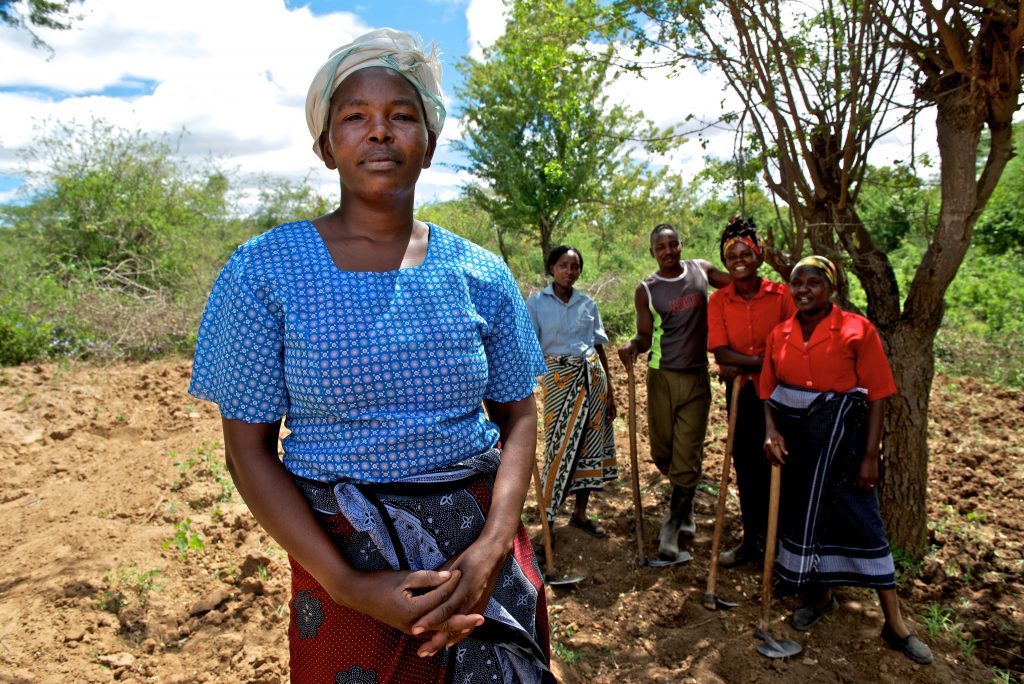Diversifying food production and diets. Easier said than done

In our commodified food system, where policies and investments tend to prioritise crops with higher market and “development” potential, it is not surprising that the bulk of intake of the global population comes from just three items – maize, rice and wheat. The precondition for good nutrition, however, is a diversified diet, which is why production diversification is the most important food-based strategy to improve nutrition. During my field experience in Samia, Western Kenya, I realised that supporting production diversity is easier said than done, even in a semi-subsistence environment which is relatively self-referential and isolated from broader developmental dynamics.
The research project I joined in Samia was hosted by the Kenyan NGO CABE (Centre for African Bio-Entrepreneurship), and funded by a public grant for youth employability. I analysed the linkages between the simplification of human diets and the food system, focusing specifically on markets.
Samia is experiencing a trend of dietary simplification. In recent decades, an incredible number of foods and varieties – mostly traditional – have either disappeared from people’s plates, or their consumption has progressively declined.
Why is this happening, and what role do market dynamics play?
In order to answer these questions, in the three months of fieldwork I met with farmers, cooperatives, community groups, district-level policy officers, NGOs and community mobilisers. I visited all the markets in the area and spoke with community based micro-processors, agro-dealers, informal market sellers and shop keepers. Looking at the everyday life of these people, I realised that even in a place like Samia where the population is mostly engaged in agriculture for subsistence and local trade, with minimum commercial purpose, market dynamics matter a lot.
The predominant perception in Kenya seems to be that food security equates to maize security; maize is heavily promoted by the national government, and the catalytic effect of such support on private investments has resulted in the maize value chain being quite developed. In contrast, no investment has been made to improve traditional production and processing methods for traditional minor cereals which are regarded as quasi-perfect substitutes of maize, such as sorghum (particularly labour intensive), as well as to strengthen informal systems where most farmers acquire seeds of traditional species and varieties. In a context where the expenditure power is very low, this maize-bias contributes to increasing the relative affordability of this staple, and encourages producers to shift their scarce resources toward it, dropping other less marketable – yet more nutritious – crops.
That said, the main conclusion of my research is that market dynamics only contribute to a trend of simplification whose root causes are, in fact, to be found elsewhere. The very reason why farmers and consumers are more and more obliged to prioritise a type of crop over another is their progressive impoverishment. In turn, this is due to environmental degradation. Not only has the destruction of local ecosystems (e.g. tree slashing due to firewood catch and haphazard housing patterns) cleared out many edible and nutritious foods and insects, but also their exploitation beyond regeneration capacity (e.g. excessive intensity of cultivation, pesticides misuse) has caused a strong decline in productivity and, subsequently, farmers’ incomes. As they become poorer, farmers are forced to look for cheaper alternatives and to cut down on the consumption of what are perceived to be – though very nutritious – “luxury” foods. Once again there is a negative feedback loop between production and consumption toward simplification, but it is clear that what is happening in Samian markets and fields, and to Samian people’s pockets, is mainly a reflection of what is happening to Samian soils and ecosystems.
In conclusion, diets are becoming increasingly simplified in Samia because of reduced on-farm diversity, caused by environmental degradation and aggravated by skewed market incentives. Dietary simplification cannot be halted if all of these aspects are not addressed, or if each is addressed in isolation. There is a need for strategies which are able to bridge production, environmental and market systems.
